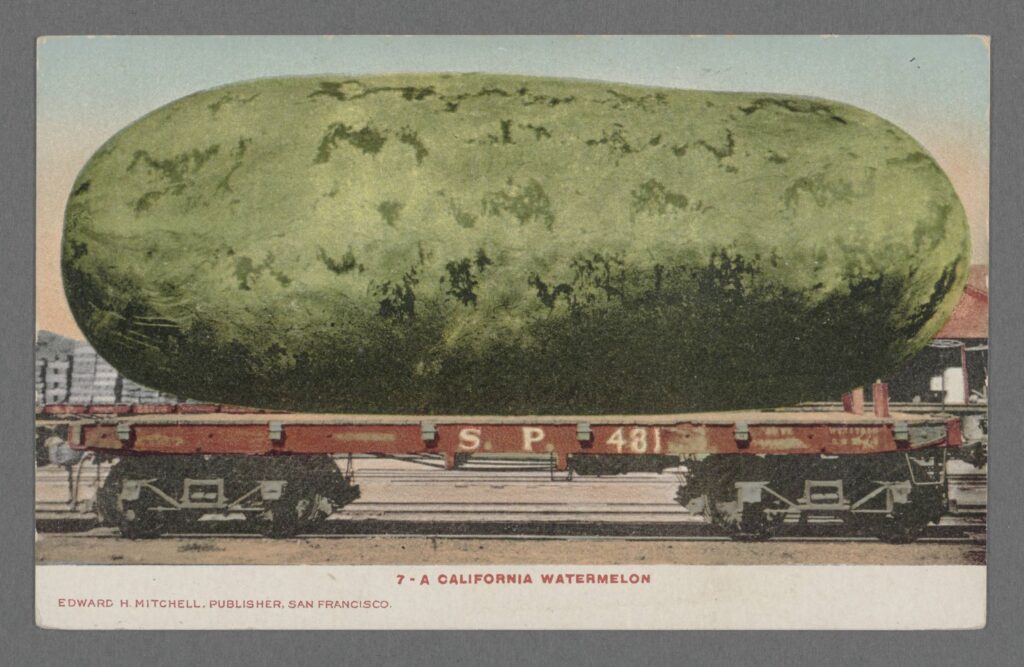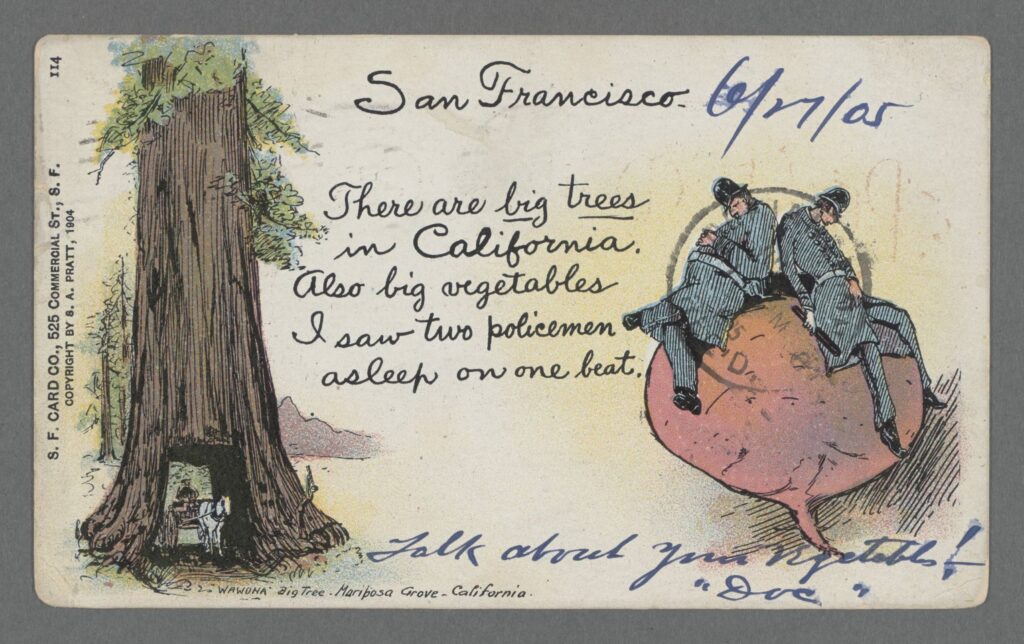Tag: Bancroft Library
A Californiana Returns to the Bay Area: Ana María de la Guerra de Robinson
Women’s history month is the perfect time to announce an exciting addition to Bancroft Library’s collection of daguerreotype portraits. At the end of 2023 the library was able to acquire a beautiful 1850s portrait of a Californiana: doña Ana María de la Guerra de Robinson, also known as Anita.
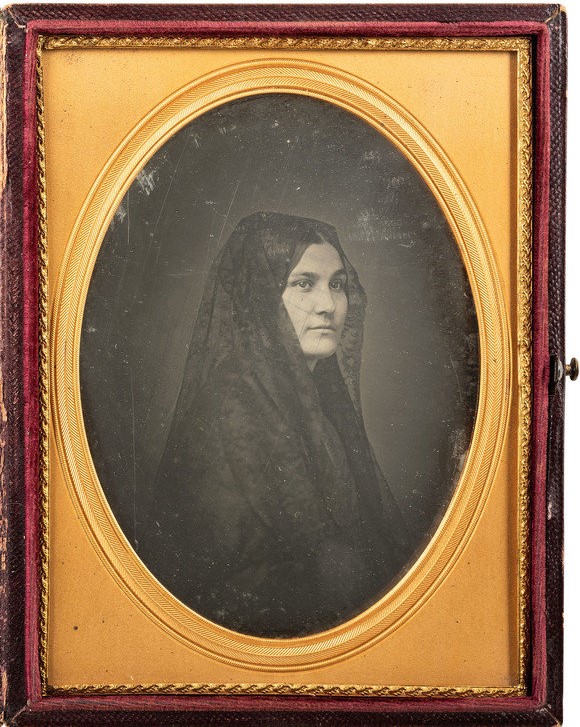
In this large (half plate format) daguerreotype of about 1850-1855, Anita wears a lace mantilla, in the Spanish fashion. A beautiful large daguerreotype like this was an extravagance at the time, and the portrait is all the more evocative because Anita, tragically, died within a few years of its creation.
Fortunately, quite a bit is known about her life. Anita was born into the prominent de la Guerra family of Santa Barbara in 1821 -– the same year the Spanish colonial period ended and control by an independent Mexico began. She was married at age 14, to an American trader and businessman named Alfred Robinson, 14 years her senior. This wedding is described in Richard Henry Dana’s Two Years Before the Mast, so we have an unusually detailed account of what was a grand occasion.
She and her husband snuck away from her family in 1838, leaving their baby daughter behind with her grandparents. Anita, age 15, wrote ”We have left the house like criminals and left here those who have possession of our hearts.” Various writers have interpreted these circumstances differently but, whatever the reason for this strange departure, Anita spent the next 15 years in Boston and the East Coast, seemingly eager to return home, but continually disappointed in the hope. It is hard to imagine that her life was entirely happy, in spite of the steady growth of her family and the prosperity and social prominence the Robinsons and de la Guerras enjoyed.
Having borne seven children, and having witnessed from afar (and apparently mourned) the transition of her homeland from Mexican territory to American statehood, Anita finally returned to California in the summer of 1852. It is likely she had her daguerreotype portrait taken at this time, in San Francisco, although it could have been taken back east. Sadly, she lived just three more years in California, dying in Los Angeles in November 1855, a few weeks after giving birth to a son. She is buried at Mission Santa Barbara.
A study of Anita’s life was published by Michele Brewster in the Southern California Quarterly in 2020 (v.102 no. 2, pg. 101-42) . Read more of her story!
With such a fascinating and relatively well-documented life, we’re thrilled to have Anita’s beautiful portrait here at Bancroft. It joins other de la Guerra family portraits, as well as numerous papers related to the family, including “Documentos para la historia de California” (BANC MSS C-B 59-65) by her father, José de la Guerra y Noriega.
Two of Anita’s sisters had “testimonias” recorded by H.H. Bancroft and his staff; one from Doña Teresa de la Guerra de Hartnell (BANC MSS C-E 67) and another from Angustias de la Guerra de Ord (BANC MSS C-D 134).
Anita’s daguerreotype itself presents an interesting conundrum and history. The photographer is unknown, as is common with daguerreotypes. The portrait has been known over the years because later copies exist in several historical collections, including the California Historical Society, the Massachusetts Historical Society, and Bancroft Library’s own Portrait File.
The daguerreotype acquired last Fall was owned for some decades by a collector. When he acquired it, it was unidentified. Later he encountered a reproduction of it in a historical publication, and thus had the identification of the sitter. Each of the known copies is somewhat different from the others. In her article, Brewster reproduces the copy from the Massachusetts Historical Society. It is a paper print on a carte de visite mount bearing the imprint of San Francisco photographer William Shew, at 115 Kearny Street.
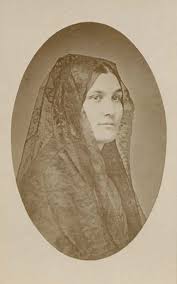
Based on this information, Brewster attributed the portrait to Shew; however, Shew is merely the copy photographer. A daguerreotype, largely out of use by the 1860s, is a unique original, not printed from a negative, so only one exists unless it is copied by camera. The carte de visite format was not in widespread use until the 1860s, and Shew was not at the Kearny address until the 1872-1879 period. So the photographer remains unidentified.
Another puzzle is posed by the early 20th century reproductions in the Bancroft Portrait File and the California Historical Society, which appear identical. These copies present a less closely cropped pose than the original daguerreotype, which is perplexing! Anita’s lap and hands are visible in the copies, but not in the daguerreotype. Although the bottom of the daguerreotype plate is obscured by its brass mat, there is not enough room at the lower edge to include these details.
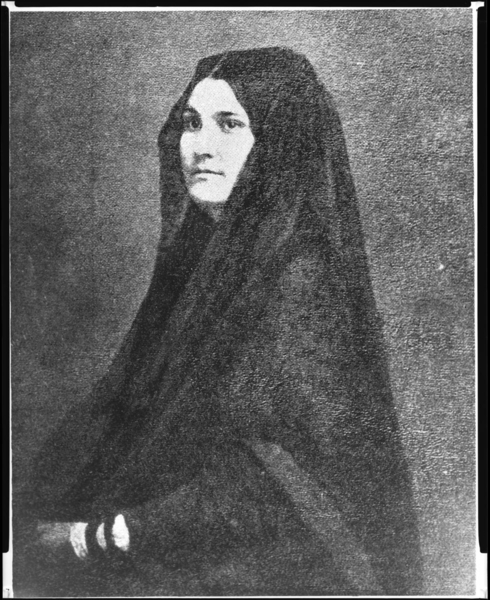
How could a copy contain more image area than the original? Upon reflection, two possibilities come to mind:
1) the daguerreotype was copied in the 19th century and photographically enlarged, then re-touched or painted over to yield a larger portrait that included her lap and hand, added by an artist. This reproduction was later photographed to produce the copies in the Portrait File and CHS.
or,
2) the original daguerreotype included her lap and hand, and it was re-daguerreotyped for family members in the 1850s, perhaps near the time of Anita’s 1855 death. When the copy daguerreotypes were made, they were composed more tightly in on the sitter, omitting the lap and hands. The newly acquired Bancroft daguerreotype could be a copy of a still earlier plate – and this earlier plate could be the source of the later paper copy in the Portrait file.
This will likely remain a mystery until other variants of this portrait surface. Are there other versions of this portrait of Anita de la Guerra de Robinson to be revealed?
Reference
Brewster, Michele M. “A Californiana in Two Worlds: Anita de La Guerra Robinson, 1821–1855.” Southern California Quarterly 102, no. 2 (2020): 101–42. https://www.jstor.org/stable/27085996.
PhiloBiblon 2023 n. 4 (June): The Bancroft Library’s Fernán Núñez Collection
I am delighted to announce that thanks to the efforts of Randy Brandt, Head Cataloguer of The Bancroft Library, it is now possible to find all of the volumes in Bancroft’s Fernán Núñez Collection.
This collection of 224 manuscripts comes from the library of the counts and then dukes of Fernán Núnez, a town near Córdoba, principally from that of the 6th count of Fernán Núñez, Carlos José Gutiérrez de los Ríos y Córdoba (1742-1795), although the nucleus of the collection probably goes back to Juan Fernández de Velasco (1550-1613), 5th duke of Frías and viceroy of Milan. According to the Diccionario Biográfico electrónico of the Real Academia de la Historia, Gutiérrez de los Ríos was a man of broad culture who wrote a biography of King Carlos III and was an honorary member of the Real Academia de Bellas Artes de San Fernando in Madrid and the Real Academia Sevillana de Buenas Letras.
University of California, Berkeley
Askins, Arthur L-F. “The Cancioneiro da Bancroft Library (previously, the Cancioneiro de um Grande d’Hespanha): a copy, ca. 1600, of the Cancioneiro da Vaticana.” Actas do IV Congresso da Associação Hispânica de Literatura Medieval. Lisboa: Edições Cosmos, 1991: I:43-47 (BITAGAP bibid 2595)
EVENT Bancroft Roundtable: Land, Wealth and Power: Digitizing the California Land Case Files, 1852-1892
November 17, 2022 | Noon | Register via Zoom
Presented by Adrienne Serra, Digital Project Archivist, The Bancroft Library, University of California, Berkeley, with an introduction by Principal Investigator Mary Elings, Interim Deputy Director, Associate Director, and Head of Technical Services, The Bancroft Library
In 2021, The Bancroft Library launched a large-scale digitization project to preserve and provide online access to more than 127,000 pages of California Land Case Files dating from ca. 1852 to 1892. These records tell an important story about the use and distribution of land, as well as social and legal justice in California following statehood in 1850, when all Spanish and Mexican land grants holders were required to prove their land claims in court. A lengthy process of litigation followed, which resulted in many early Californians losing their land. The Land Case Files are heavily used by current land owners, genealogists, historians, and environmentalists to understand the land, its uses, and ownership over time. The digitization project, Land, Wealth and Power: Private Land Claims in California, ca. 1852 to 1892 (Mary Elings, Principal Investigator), was awarded a 2019 Digitizing Hidden Special Collections and Archives: Amplifying Unheard Voices grant. Digital Project Archivist Adrienne Serra will discuss the collection and the project, including the challenges of preparing and imaging fragile materials under pandemic restrictions, and plans for future community engagement projects.
See you there! As always, this talk will also be recorded and added to our Youtube channel.
Best,
Christine & José Adrián
Resource: Bancroft Roundtables online
The Bancroft Library has updated its website with links to online presentations of most of the past Bancroft Roundtable events. These include:
September 16th
Expanding Access to WWII Japanese American Incarceree Data Using Machine Learning
Presented by Marissa Friedman, Digital Project Archivist, The Bancroft Library
Watch online on YouTube
October 21st
A Good Drink: In Pursuit of Sustainable Spirits
Presented by Shanna Farrell, Interviewer, Oral History Center, The Bancroft Library
Watch online on YouTube
November 18th
The Photographs of the Northwest Boundary Survey, 1857 to 1862
Presented by James Eason, Principal Archivist, Pictorial Collection, The Bancroft Library
Watch online on YouTube
Event: Bancroft Roundtable: A Good Drink: In Pursuit of Sustainable Spirits
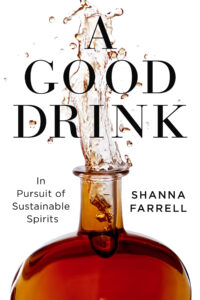 ROUNDTABLE: A Good Drink: In Pursuit of Sustainable Spirits
ROUNDTABLE: A Good Drink: In Pursuit of Sustainable Spirits
October 21, 2021
Noon
Register via Zoom
Presented by Shanna Farrell, Interviewer, Oral History Center, The Bancroft Library
Shanna Farrell, an interviewer at the Oral History Center, will join the Bancroft Roundtable to discuss her new book, A Good Drink: In Pursuit of Sustainable Spirits. Before she was an oral historian, she was a bartender. She not only mixed drinks and poured spirits, but learned their stories–who made them and how. In A Good Drink, Farrell takes readers on a global journey to meet farmers, distillers, and bartenders who are driving the transformation to sustainable spirits. Along the way, she reveals the urgent need for a sustainable spirits movement, as distilling requires huge volumes of water, bars generate mountains of trash, and crops for spirits are often grown with chemicals that are health hazards and environmental pollutants. Farrell will discuss how she drew on her training as an oral historian to research the environmental issues at hand, meeting and interviewing featured narrators, and the strengths of taking an interdisciplinary approach to tell the story of what’s at stake for sustainable spirits.
From the Oral History Center Director — July 2021
From the Oral History Center Director — July 2021
I recently had the pleasure of watching a new documentary film, The Sparks Brothers (2021), which details the solidly unconventional musical career of Ron and Russell Mael, lifetime stalwarts of the band Sparks. This film has everything one might want from a rock and roll documentary: rare footage of live performances, insightful commentary from artists influenced by the band (Beck, Bjork, Weird Al), and a narrative charting several artistic ups and downs. You might watch it and think that you caught an episode of “Behind the Music” (without the cliche visits to Betty Ford) or This is Spinal Tap (the new wave remix). But the thing about this film that really caught my attention — and got me thinking about our work at OHC — is how revealing and edifying a full life history can be (as is done with The Sparks Brothers as well as with many of our oral histories).
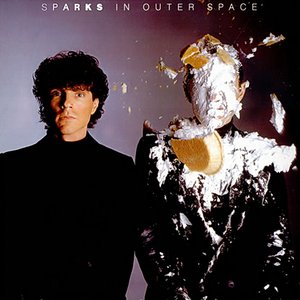
Growing up in California in the early 1980s, Sparks originally came to me as another hip, ironic, proudly nerdy Los Angeles new wave band. Surely the first song of theirs I heard was “Cool Places,” an absurdly upbeat synthpop song performed with and co-written by Jane Weidlin of the Go-Go’s. I saved my pennies and soon purchased the album (Sparks in Outer Space) and loved most every song. I followed their career through another few albums then, as teenagers do, moved on to other bands and sounds. To me Sparks remained in my memory as a genre-band — a very good one, but still one of a particular type.
Watching this full-life documentary, however, upset my own memories of this band. It revealed parts of their lives (including telling moments of their childhood) that were unknown to me. It showcased their early years as a Zappa-like freak band, their move to England where they earned fans as glam-rockers, their burgeoning interest in synthesizers and ultimately their collaboration with synth-god Giorgio Moroder, and finally their return to Los Angeles and reincarnation as a new wave band. The film also details the years since the 1980s, which took the pair in even more esoteric musical directions while continuing to win new fans, garner critical accolades, and stage frankly amazing artistic achievements. After watching this video, I am now eager to dig deeper into their music and thus discover bits of pop music past that thus far had been hidden to me. New music need not emanate from this day and age after all.
This is one of the reasons that I think the life history interviews we do at the Oral History Center are so incredibly valuable. When we conduct this type of oral history (ten hours or more with a single individual) we not only have the opportunity to ask the obvious questions (“tell me about the research that led to your Nobel Prize?” “What was it like to win at the Supreme Court?”), we are afforded the freedom to explore the lesser known aspects of a narrator’s life. With the additional hours of interviewing, we can document the narrator’s family background, upbringing, and education. We can detail early career moves that maybe didn’t amount to much but which taught crucial life lessons. We can document failures as well as successes. In my interview with Herb Donaldson, the first gay man appointed as a judge in California, I also learned about his side job as a coffee importer and roaster who gave key advice to a certain coffee shop getting started in Seattle (yes, Starbucks). With former Kaiser Permanente CEO George Halvorson, I got a fascinating account of his establishing a new health system in rural Uganda. And in my in-progress interview with famed Newsweek and Vanity Fair reporter Maureen Orth, there’s a lengthy description of her two years in the Peace Corps. While perhaps not what these people are best known for, these “other projects” not only provide great insight into the individual but often offer useful insights into historical events. Sometimes you think you know the whole story, or at least the most important part of that story. But when you read — or conduct — life history interviews, you soon learn that all parts are important and those less regarded can be the most surprising.
In this spirit of uncovering less known accomplishments, I want to pay tribute to Bancroft staff who recently retired. At the end of June we witnessed the departures of Bancroft Director Elaine Tennant (also a renowned scholar of German literature and culture), Deputy Director Peter Hanff (also a recognized expert in all things Wizard of Oz, which he detailed in his oral history), finance manager Meilin Huang (also the savior of the Oral History Center on many occasions), and photographic curator Jack von Euw (also an excellent curator of many Bancroft exhibits). We bid farewell to these four esteemed colleagues. We hope that retirement adds several new and interesting chapters to already very accomplished lives.
Find these and all our oral histories from the search feature on our home page. You can search by name, key word, and several other criteria.
Martin Meeker, Charles B. Faulhaber Director, Oral History Center
530K Primary Resources Now Available Online through The Japanese American Evacuation and Resettlement: A Digital Archive
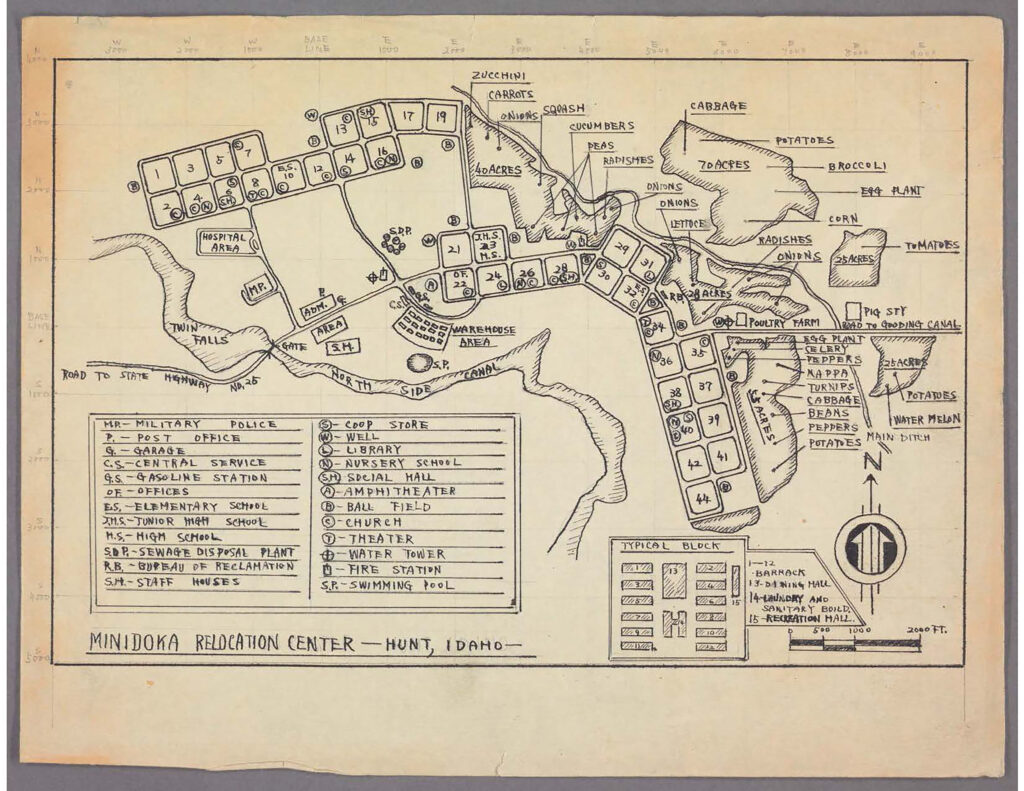
The Bancroft Library has recently completed the digitization of nearly 150,000 items related to the confinement of Japanese Americans during World War II as part of a two-year effort to select, prepare, and digitize these primary source records as part of a grant supported by the National Park Service’s Japanese American Confinement Sites Grant Program. This program helps to support the preservation and interpretation of U.S. confinement sites where Japanese Americans were detained during World War II. This recent project, The Japanese American Internment Sites: A Digital Archive, represents our fourth grant from this program, which together have culminated in over 530,000 primary resource materials being made available online.
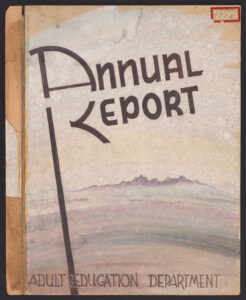
The project focused on the U.S. War Relocation Authority (WRA) files from the Japanese American Evacuation and Resettlement Records (BANC MSS 67/14 c). The WRA was created in 1942 to assume jurisdiction over the incarceration of Japanese Americans during the war. Between 1942-1946, the agency managed the relocation centers, administered an extensive resettlement program, and oversaw the details of the registration and segregation programs. These newly digitized records from the Washington Office headquarters and the district, field, and regional offices, formally document WRA management of internment of Japanese Americans in “relocation” centers and resettlement of approved individuals under supervision in the eastern states. Digitized materials document the registration of individuals; disturbances such as strikes; policies and attitudes; daily life in the camps including educational and employment programs; correspondences and other writings by evacuees; Japanese American service in the armed forces; and public opinion.
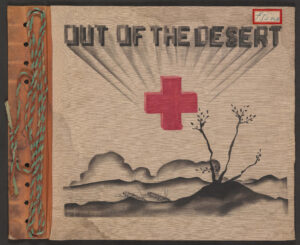
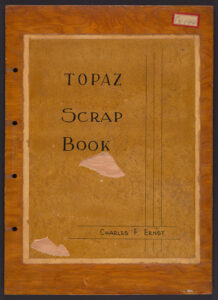
Since 2011, the Bancroft has been awarded four grants from the National Park Service’s Japanese American Confinement Sites Grant Program. The previous grants have digitized records from the Japanese American Evacuation and Resettlement Study and archival collections selected from individual internee’s personal papers, photographs, maps, artworks, and audiovisual materials. The Bancroft’s Japanese American Evacuation and Resettlement: A Digital Archive website (http://bancroft.berkeley.edu/collections/jacs) brings together all the digitized content and the recently published LibGuide (https://guides.lible.berkeley.edu/internment) that explains how to use and access these collection resources.
As we now embark on our recently awarded fifth grant from this program, we look forward to bringing even more collections online to support researcher access. We are honored and grateful to be able to make these important resources available to help interpret this period in American history and to preserve them for future generations.
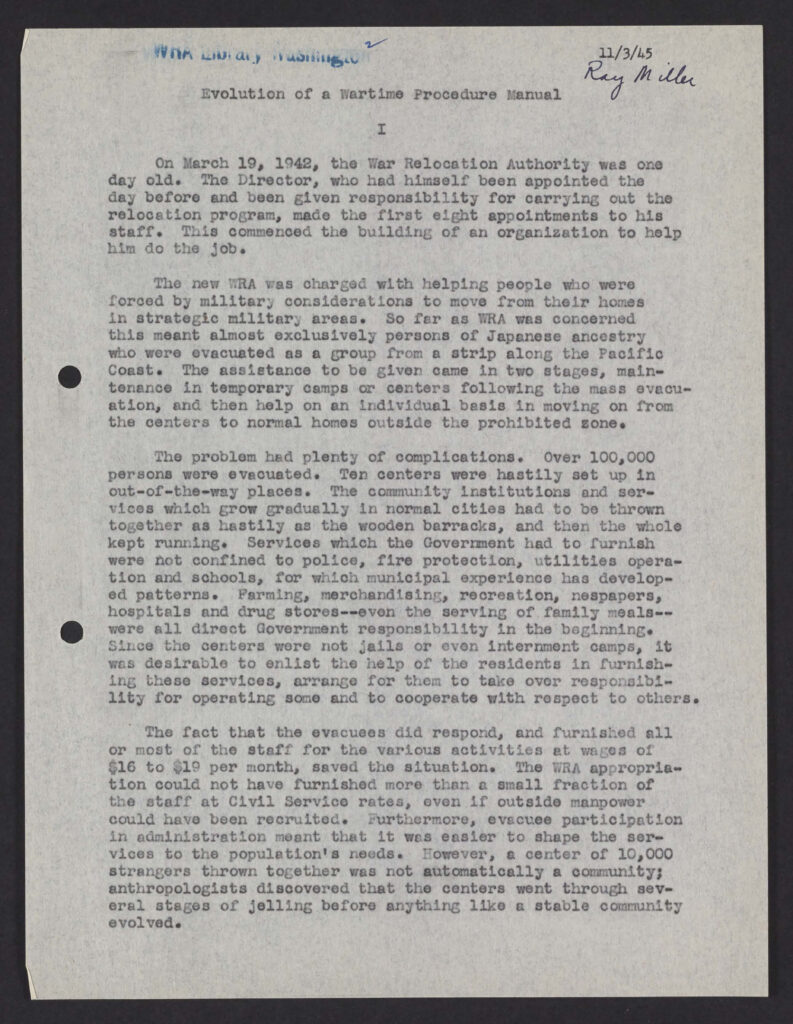
The project was led by digital project archivist Lucy Hernandez and principal investigator Mary Elings, Assistant Director of Bancroft and Head of Technical Services. Special thanks to Julie Musson, digital collections archivist at Bancroft and Jennafer Prongos, BackStage Library Works technician for their work on this project, as well as support from Theresa Salazar, Bancroft curator of Western Americana. Many thanks to the Library Information Technology group at the University Library for their work in managing the files, maintaining the information systems used in the project, and ensuring the publication and long term preservation of the digitized collections through our partnership with the California Digital Library.
————
This project was funded, in part, by a grant from the U.S. Department of the Interior, National Park Service, Japanese American Confinement Sites Grant Program. Any opinions, findings, and conclusions or recommendations expressed in this material are those of the author(s) and do not necessarily reflect the views of the U.S. Department of the Interior.
Scenic Views, Civic Pride, and Silly Gags: Edward H. Mitchell Postcards at The Bancroft Library
We all feel our wings are clipped this holiday season, but you can enjoy a tour around turn-of-the-century California, journey up the Pacific Coast, around the American West, or even visit Hawaii and the Philippines, thanks to newly published content on the Berkeley Library’s Digital Collections site.
Over 10,000 postcards issued by San Francisco publisher Edward H. Mitchell, circa 1898-1920, are now online. This nearly-comprehensive collection was compiled over many decades by Walt Kransky, who generously donated it to The Bancroft Library. Walt’s website has been the go-to site for collectors interested in Mitchell cards; there he compiled a checklist of all known Mitchell postcards, whether he owned examples or not. And he did own the vast majority!
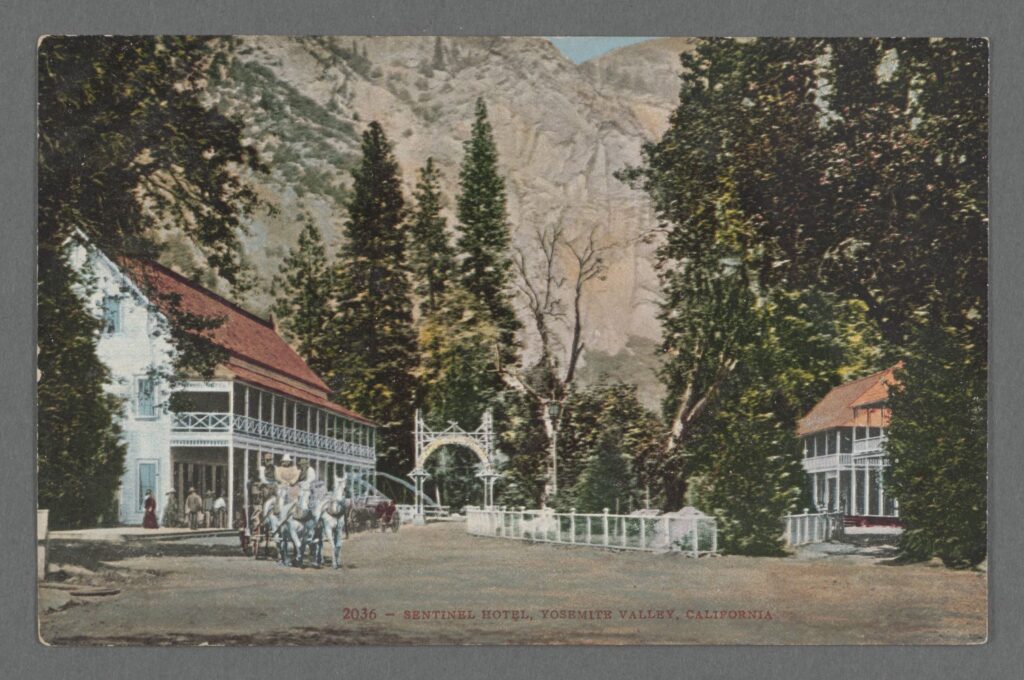

Must-see tourist sites from Yosemite to Southern California beaches and the mountains and forests of the Northwest are in abundance, but so are local industries, agriculture, and countless examples of small town pride.
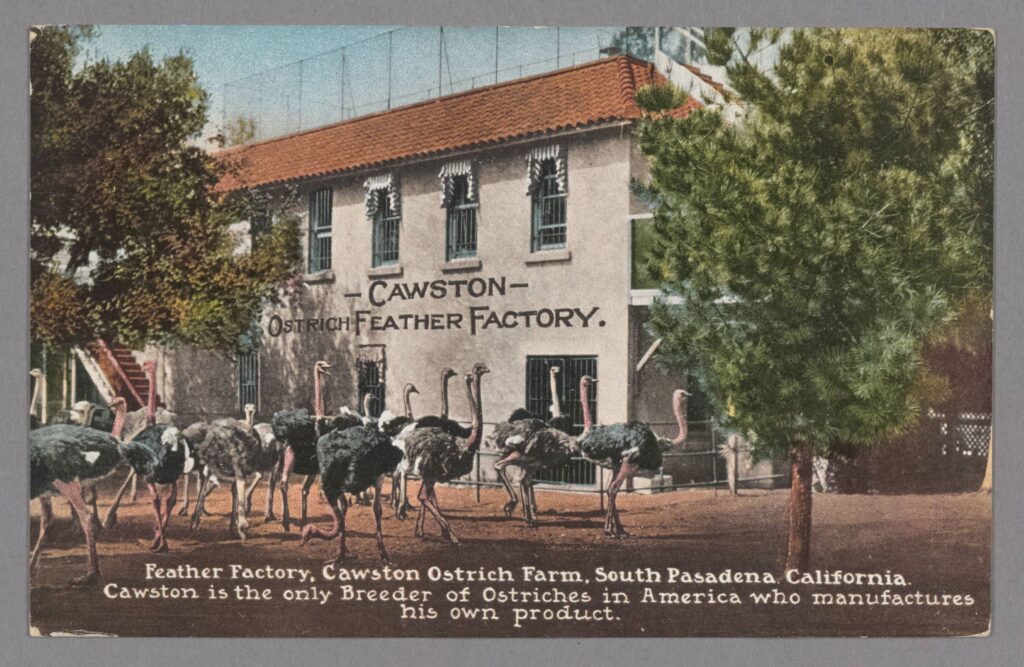
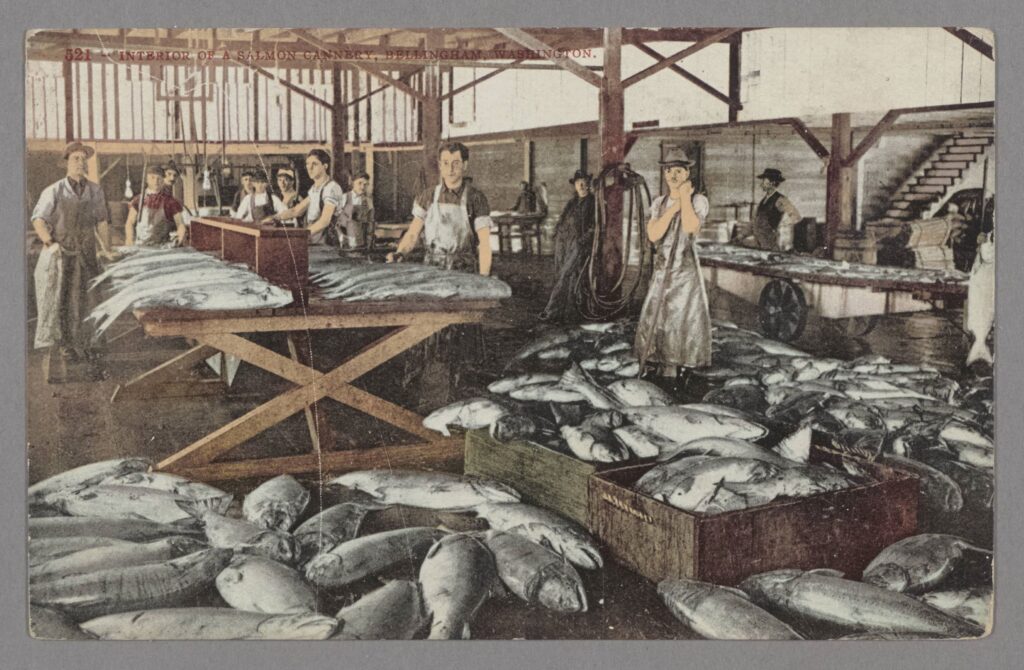
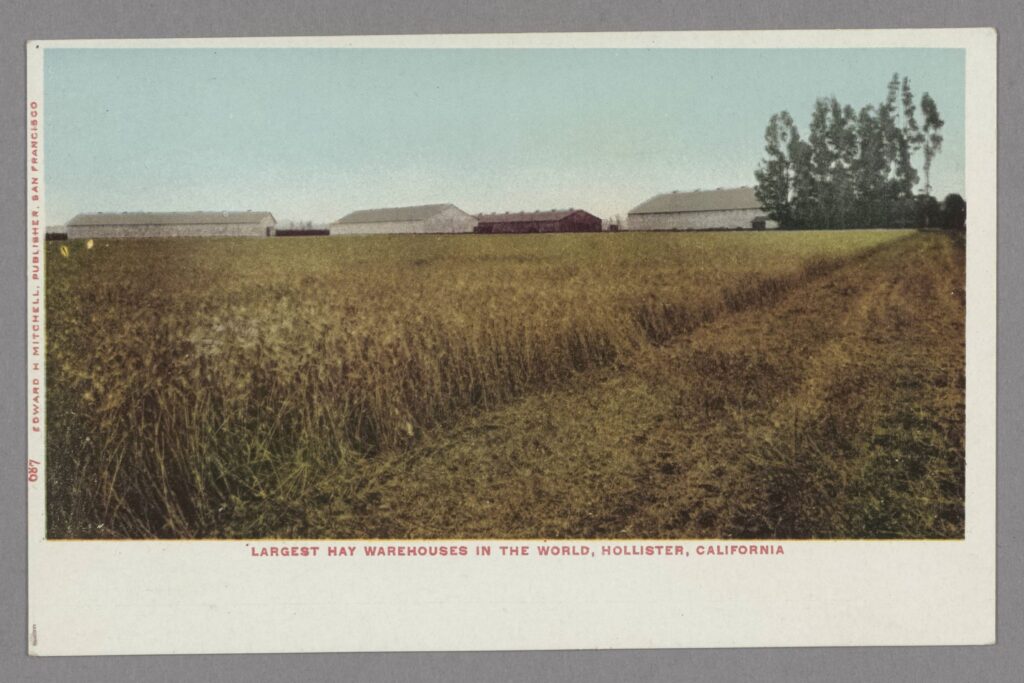
There is quite a range of court houses, schools, asylums, and even irrigation works on view.
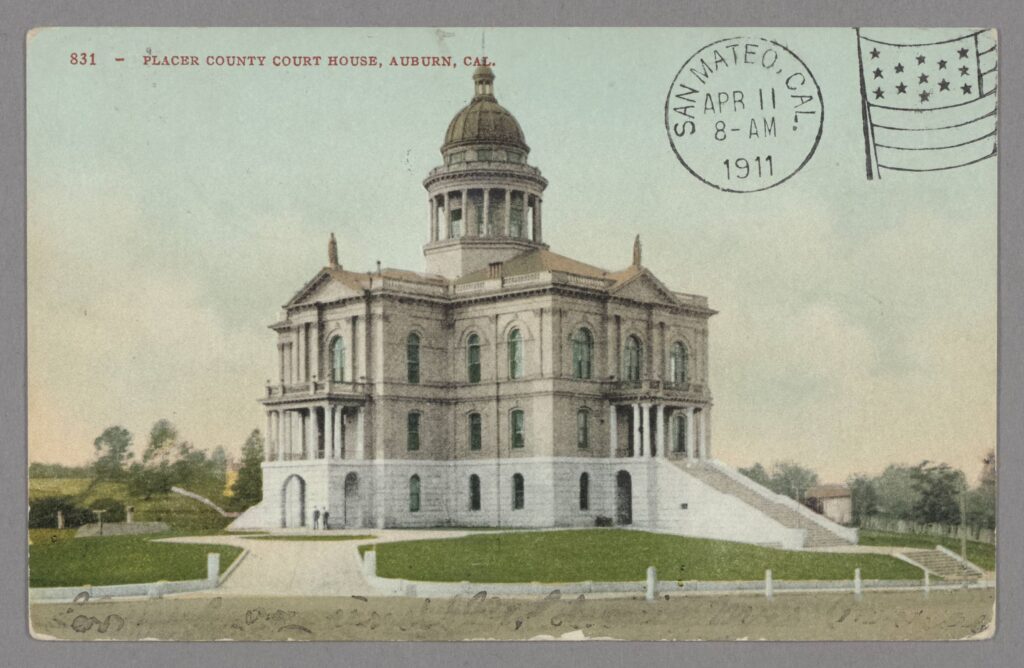
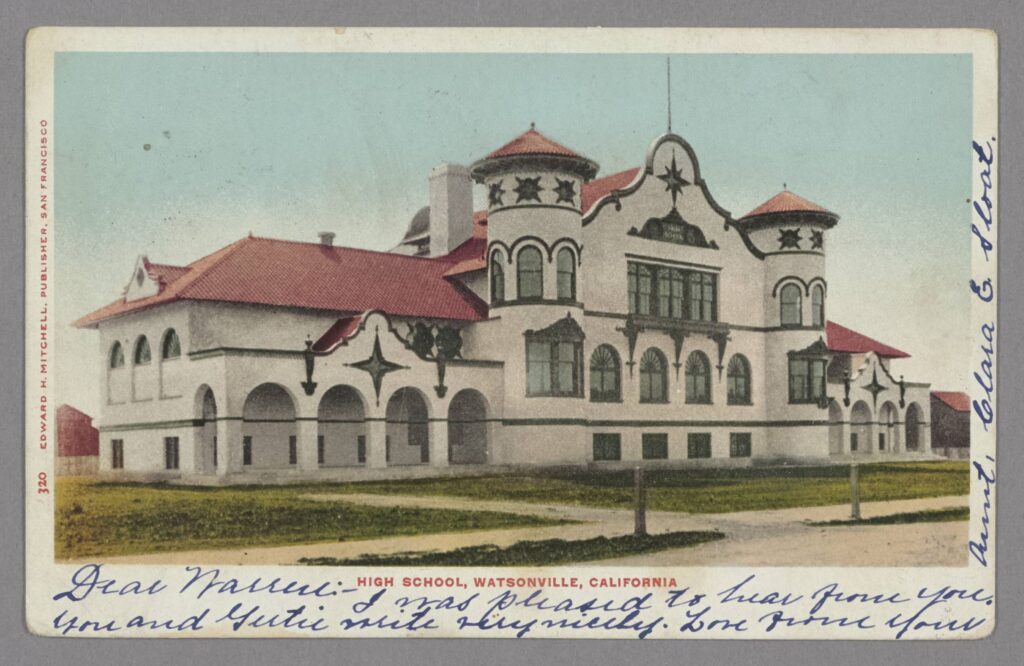
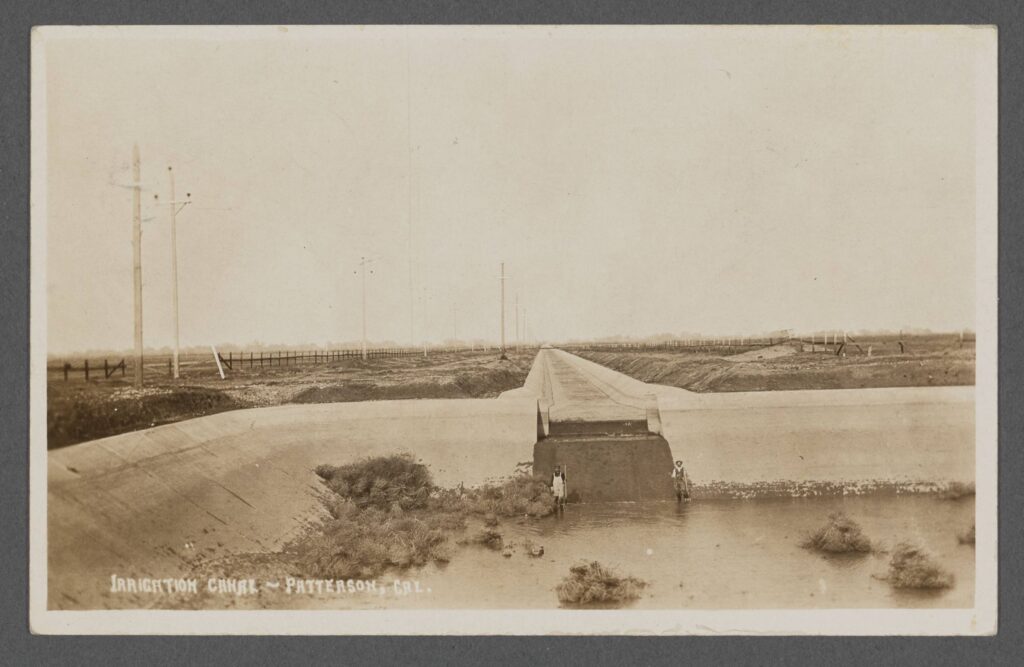
Period humor, for better or worse, is a recurring feature.
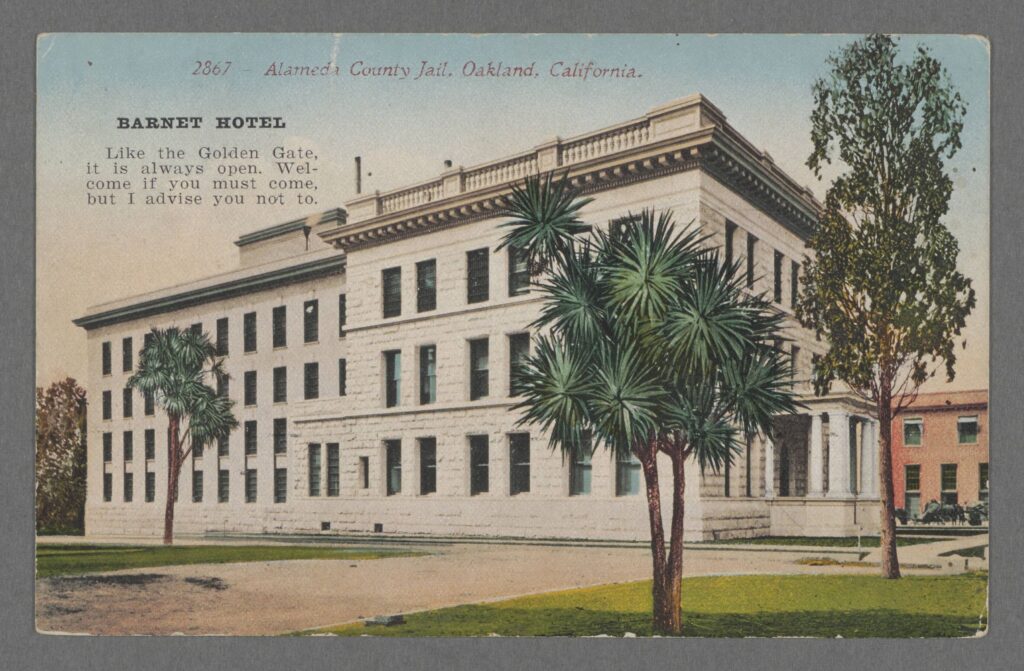
In addition to great images, Kransky’s Mitchell collection provides insight into the business of early postcard production. This was a new form when 1898 “Private Mailing Cards” were first issued as “authorized by act of Congress.”
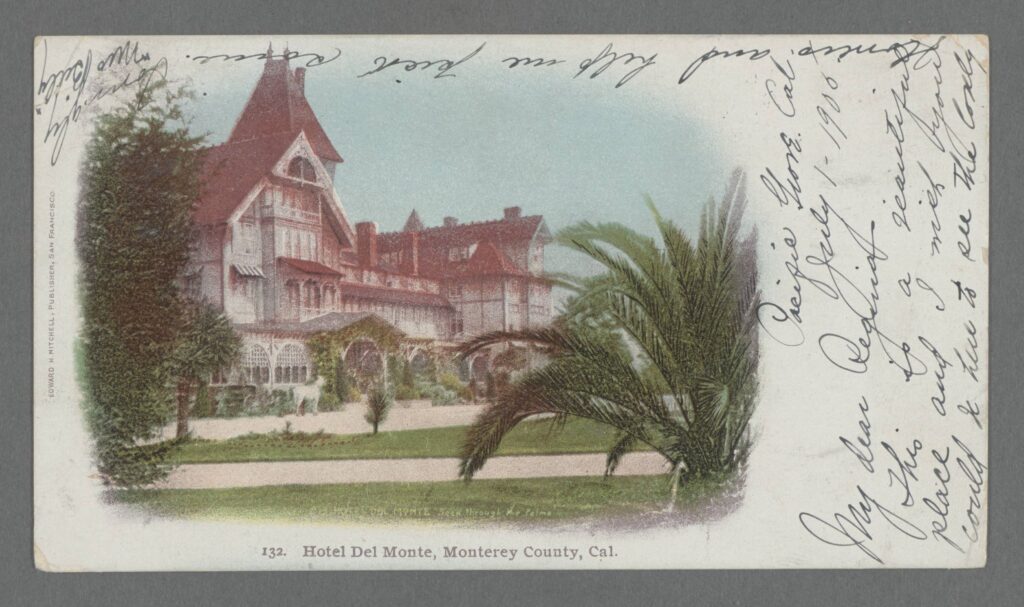
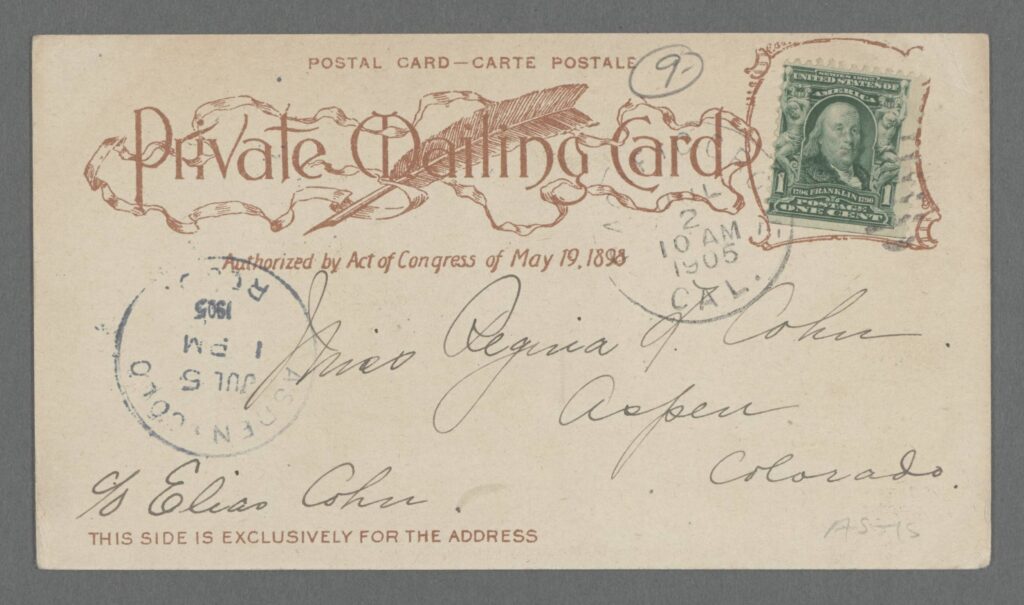
Walt Kransky arranged his collection by back type and imprint style and he collected duplicates of given images in all their various styles of presentation. This variety, all from a single publisher, offers great opportunity for scholarship and close studies of visual culture early in the 20th century.
So, whatever your interest, make a cup of cocoa and enjoy an armchair tour, courtesy the Walter Robert and Gail Lynn Kransky collection of Edward H. Mitchell postcards at The Bancroft Library!
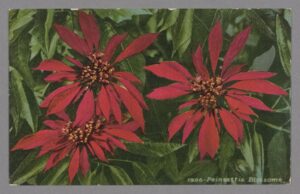
Many Library staff collaborated to bring this collection online. Bancroft curatorial and acquisitions staff worked with the donor to preserve this collection at Berkeley, and hundreds of hours of work on descriptive data and inventory alignment were carried out in Bancroft Technical Services’ Pictorial Unit. Library Imaging Services created the thousands of high resolution scans, and the descriptions and images were linked together and brought online through the efforts of Library IT. Most importantly, thanks are due to Walt and Gail Kransky for their generosity, his decades of collecting, and the years of expertise he committed to documenting his collection.
An African American short story in French
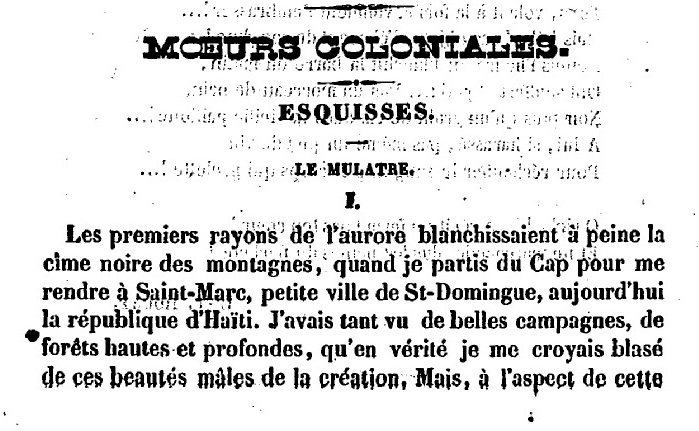 Born in New Orleans, Victor Séjour (1817-1874) was a Creole writer who moved to France at the age of 19 to continue his education, find work, and flee the racial oppression of Louisiana. His short story “Le Mulâtre” (“The Mulatto”) was first published in the abolitionist journal Révue des Colonies (March 1837) not long after his arrival in Paris and is now freely available through Gallica—the digital library of the Bibliothèque nationale de France. It is the first work of fiction written by an African American author. Set in Saint Domingue before the Haitian Revolution, Séjour’s work centers on the injustice and cruelty of slavery. According to Marlene Daut and David O’Connell in her article “Sons of White Fathers: Mulatto Vengeance and the Haitian Revolution in Victor Séjour’s ‘The Mulatto'” published in Nineteenth-Century Literature 65:1 (June 2010), the tale was “not simply a blow . . . struck for the cause of abolition in the French colonies, but [was] . . . also one of the first manifestations of a ‘literature of combat’ written by an American black.””
Born in New Orleans, Victor Séjour (1817-1874) was a Creole writer who moved to France at the age of 19 to continue his education, find work, and flee the racial oppression of Louisiana. His short story “Le Mulâtre” (“The Mulatto”) was first published in the abolitionist journal Révue des Colonies (March 1837) not long after his arrival in Paris and is now freely available through Gallica—the digital library of the Bibliothèque nationale de France. It is the first work of fiction written by an African American author. Set in Saint Domingue before the Haitian Revolution, Séjour’s work centers on the injustice and cruelty of slavery. According to Marlene Daut and David O’Connell in her article “Sons of White Fathers: Mulatto Vengeance and the Haitian Revolution in Victor Séjour’s ‘The Mulatto'” published in Nineteenth-Century Literature 65:1 (June 2010), the tale was “not simply a blow . . . struck for the cause of abolition in the French colonies, but [was] . . . also one of the first manifestations of a ‘literature of combat’ written by an American black.””
A full English translation of “The Mulatto” was published more than one hundred years after his death in The Norton Anthology of African American Literature, edited by Henry Louis Gates Jr. and Nellie Y. McKay (New York: W. W. Norton and Co., 1997). Remembered as one of the first black writers of both the African American and French literary traditions, Victor Séjour enjoyed a period of success as a playwright, was naturalized as a French citizen, and is buried in the Père-Lachaise Cemetery in Paris. The Library has reprints in French and a few English translations of his works in the Main Stacks while The Bancroft Library houses two rare first editions – La madone des roses : drame en cinq actes, en prose (1869) and La tireuse de cartes; drame en cinq actes et un prologue, en prose (1860) in its African American Writers collection.
This post has been shared as part of a UC Berkeley initiative announced by Chancellor Carol Christ to mark the 400th anniversary of the forced arrival of enslaved Africans in the English colonies.
UC Berkeley Oral History Center: Jerry Brown Oral History
“Jerry Brown, I found, to be a man with a largely unwavering set of core values and principles who sometimes appears to choose contradictory ways in which to express those drives.”
— Director Martin Meeker, Oral History Center of The Bancroft Library, reflecting on his experience interviewing Jerry Brown
Inside the Jerry Brown Oral History
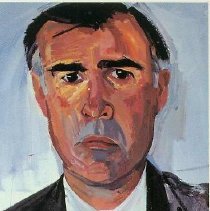
There are very few individuals who are what might be called a “shoe-in” for an Oral History Center life history interview. Governor Jerry Brown is one who easily qualifies. Brown’s career as an elected official began in Southern California in 1969 when he was elected to the Los Angeles Community College Board of Trustees and then continued for nearly the next fifty years through a succession of high offices; in 2018 he concluded his record fourth term as governor.
In forty hours of interviews, there are at least three main areas of study of the life of Jerry Brown, and politics much more broadly, that might be impacted by the contents of this interview from today’s vantage point: the historical trajectory of key social and political issues; the influence of creative and unique ideas upon Brown and his agenda; and what might be called the philosophy of realpolitik — of how politics really works, at least according to Brown.
The Jerry Brown oral history was made possible by funding from the State Government Oral History Program, A Project of the California Secretary of State, State Archives.
Dive Deeper
Dive deeper into the political life of Jerry Brown through the Jerry Brown oral history.
“20 Shades of Jerry Brown” UC Berkeley Podcast
“We had 20 interview sessions, and I would say that in those 20 interview sessions, we had 20 different shades of Jerry Brown,” explains Oral History Center Director Martin Meeker in UC Berkeley’s 9-minute Fiat Vox podcast, “Berkeley oral history project reveals 20 shades of Jerry Brown.” Get a taste of the oral history — hear Brown talk about the medfly invasion, Linda Ronstadt, and politics past and present. Martin Meeker provides insights into this “extraordinarily detailed, thoughtful, self-critical, broad, and sweeping oral history.”
Jerry Brown Interview History
For the historians at UC Berkeley’s Oral History Center, the question was not, “Should this interview be done?” but rather, “How might it be done at all?” Get the inside story about the making of this riveting 40-hour oral history from interviewer and Oral History Center Director Martin Meeker.
Governor Gray Davis Foreword to the Jerry Brown Oral History
When Gray Davis tried to have a hole in the governor’s rug repaired, Jerry Brown responded, “That hole will save the state at least $500 million, because legislators cannot come down and pound on my desk demanding lots of money for their pet programs while looking at a hole in my rug!” Find out why Gray Davis, the 37th Governor of the State of California, who served as chief of staff to Jerry Brown during his first two terms as governor (1975-1981), thinks Jerry Brown is one of the most consequential governors in California history.
California State Government Oral History Program
The Jerry Brown oral history is a part of the State Government Oral History Program and is the cornerstone of the re-launch of the program under California Secretary of State Alex Padilla. All of the oral history materials (recordings and transcripts) will be deposited with the California State Archives and available to users through their website as well.
Jerry Brown Oral History Transcript
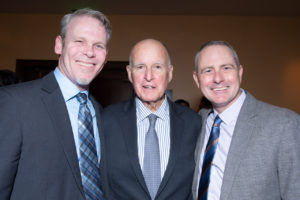
Read the transcript of the 40-hour oral history. In this oral history, the following topics are discussed at length: family background and upbringing; education, religion, and friendships; the political career of Pat Brown; college, seminary, and law school; California statewide elected offices, including Governor of California; campaigns for elected office, including for US President; election reform; taxation, budgets, and deficits; law, the courts, and criminal justice reform; immigration; the environment and climate change; education reform, charter schools, and higher education; Oakland, CA; popular culture, journalism, and political campaigns; political philosophy, theories of governance, and applied politics.
KQED Forum Podcast Featuring OHC Director Martin Meeker
Politics was the family business. The Democratic party was tribal for Brown. Listen as Oral History Center Director Martin Meeker, and KQED interview partners Scott Shafer and Guy Marzorati, talk about the unique political perspective and interviewing style of Jerry Brown.

KQED Podcast: The Political Mind of Jerry Brown
From KQED: The Political Mind of Jerry Brown brings listeners the wisdom of the former Governor, Mayor, and presidential candidate. The Oral History Center’s Martin Meeker and Todd Holmes, and KQED’s Scott Shafer, interviewed Brown for more than 40 hours, covering the former governor’s life and half-century in the political game – and Brown has some lessons he’d like to share. Premiering January 8 with hour-long episodes on KQED 88.5 FM every Wednesday at 8pm through January 29.
Find this interview and all our oral histories from the search feature on our home page. You can search by name, key word, and several other criteria.
Bancroft Roundtable: Thursday, February 20 at noon in the Lewis-Latimer Room of The Faculty Club (This event has passed.)
Brown, Behind the Scenes: Contending with Governor Jerry Brown and His Oral History
In this presentation, OHC historians Martin Meeker and Todd Holmes will provide the behind-the-scenes story of a remarkable interview with a singular Californian and offer an initial perspective on how this oral history might influence our understanding of California and its political culture.
